 Biscayne National Park is a coastal haven of mangrove forests, coral reefs, and historical submerged shipwrecks. The 173,000-acre park in South Florida is 95% underwater, so marine debris removal is a priority for Biscayne’s natural resources team. This week’s project objective is to remove as much marine debris from the park as possible. The term “marine debris” encompasses a plethora of objects that are discarded in the ocean. Soda cans, car tires, monofilament fishing line, toilets (yes, toilets), nets, plastic bags, you name it. They’re tossed into the sea and can cause significant damage to coral reefs and marine life. Many of these items take decades, or even centuries, to degrade. When these harmful objects are left in marine ecosystems, they accumulate and pollute the ocean more and more each year.
Biscayne National Park is a coastal haven of mangrove forests, coral reefs, and historical submerged shipwrecks. The 173,000-acre park in South Florida is 95% underwater, so marine debris removal is a priority for Biscayne’s natural resources team. This week’s project objective is to remove as much marine debris from the park as possible. The term “marine debris” encompasses a plethora of objects that are discarded in the ocean. Soda cans, car tires, monofilament fishing line, toilets (yes, toilets), nets, plastic bags, you name it. They’re tossed into the sea and can cause significant damage to coral reefs and marine life. Many of these items take decades, or even centuries, to degrade. When these harmful objects are left in marine ecosystems, they accumulate and pollute the ocean more and more each year.
This week’s project is extremely unique, and I can’t wait to get started. For one, the team consists entirely of women. Not only that, but five of the team members are military veterans from the Wounded American Veterans Experience Scuba (WAVES) program. The non-profit is a partner organization to the NPS Wounded Veterans In Parks (WVIP) program, which provides opportunities for veterans to volunteer with parks or programs like the Submerged Resources Center (SRC) and work alongside NPS divers on specific resource or maintenance projects. In addition to supporting the mission of the NPS, scuba diving offers countless therapeutic benefits due to the properties of an aquatic environment 一 the feeling of weightlessness, limited audio input, and less force of gravity. For military veterans, the freeing and relaxing nature of diving can further facilitate recovery from a number of service-induced injuries, from amputation to Post-Traumatic Stress Disorder (PTSD).
I’m excited to participate in such a unique experience for the veterans, and I’m particularly thrilled that we’re working as an all-female team. Personally, I’ve never done anything scuba-related with a fully female group. Most of my scuba instructors were men, and in my experience, men far outnumber women in the professional diving industry. Similarly, female representation in the armed services is small. Working in male-dominated work environments can have its challenges, especially when the job is fairly physically demanding. I’m hopeful that during the upcoming week, the women involved in the project will be able to work without feeling the need to “keep up with the guys”, an all-too-common pressure that many women feel in the workplace, especially in the armed forces.
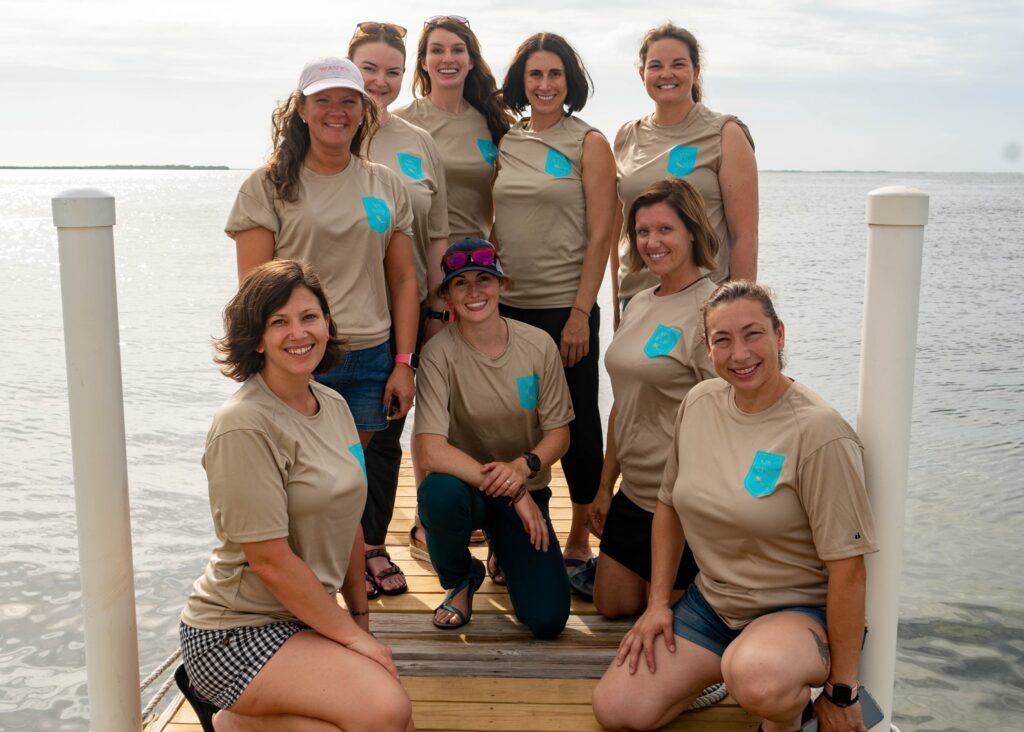
The crew for the week! From left: Karen, Ashley, Annie, Abbie, myself, Linsay, Jess, Char, and Esme. Photo credit: Susanna Pershern
—
My internship schedule is packed until October, with the exception of a single week of downtime between my recent project in St. Croix and my upcoming assignment in Biscayne. I fly back home to Colorado for the off days. It’s a much-needed opportunity to catch up on writing, organize my photos, and repack for the next leg of my journey.
Come Saturday morning, I head to the airport to hop on a flight to Miami. I’m back in the groove of traveling (or so I think…), so I cruise through security and arrive at the terminal with plenty of time to spare. First, I sit down to reorganize my backpack. Airport security has a tendency to be suspicious of the wide-angle lens that fits on my underwater camera housing, so I typically pack the lens in the top of my bag before going through security and rearrange it prior to boarding my flight. After I reorganize, I grab breakfast, fill up my water bottle, and head to the gate.
The flight is nearly four hours long, so I’m planning to work after we take off. I fidget in my seat until the seat belt sign turns off. My morning cup of coffee has kicked in and all I want to do is put my headphones on, zone out, and catch up on blog writing. Eagerly, I jump up and reach for the laptop case in my backpack.
Strange. I can’t feel it. I dig deeper in the seemingly bottomless bag. It’s a laptop case, so it takes up a decent amount of space. At least, it does when it’s in the bag, which I quickly realize it is not. I immediately start mentally backtracking my steps. Within seconds, I know where my laptop is. It’s on the floor, next to a seat in the terminal. Gate B43. Well, it might be. Who knows at this point.
I’ve NEVER done this before. Sure, I’ve left the bathroom without picking up my cell phone, but I’ve always been quick to realize my mistake and turn around to grab it. Unfortunately, there is no option to turn around in this scenario. I’m rattled, but the situation is out of my control. I sit back into my seat, remind myself that it could be worse, and try to shake it off. I’ll handle it when I land.
Ultimately, there’s not much I can do to “handle” the lost laptop scenario. I file a report with lost and found and will just have to wait and see. Thankfully, the SRC crew is more than supportive when they hear about my predicament. SRC Chief, Dave Conlin, generously offers me the use of his personal laptop for as long as I need, and Matt Hanks, one of the team’s archaeologists, says he’ll check the lost and found in Denver when he flies out to meet us in a few days (the SRC men will be working on archaeological projects in Biscayne while we’re doing the WVIP project). It’s reassuring to feel like no matter what happens to the computer, I’m in good hands.
—
It’s Monday morning, and I’m piling into a packed-to-the-brim Suburban with Annie Wright, an SRC archaeologist, and Susanna Pershern, an SRC photographer. Annie is the project lead, and Susanna is documenting the project. Susanna and I are dive buddies for the week, so I’m looking forward to watching and learning from her. I wasn’t able to work on underwater photography much during my last project in St. Croix, but this week I’ll have plenty of opportunities to learn, practice, and hone my underwater photography skills. Having access to a professional makes for an even better situation!
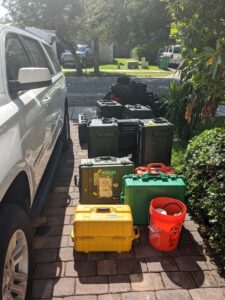
After loading the car, we drive to Key Largo and meet the women from the WAVES group. There are five veterans: Linsay, Abbie, Char, Esme, and Karen. Accompanying the group is Ashley, a WAVES scuba instructor, and Jess Keller, a former SRC archaeologist who now works at the University of Miami. At first, introductions are polite and somewhat reserved. I get the sense that everyone’s a bit nervous but simultaneously excited. I sure am! Our ten-woman group will be living together in an apartment above Quiescence Dive Services and diving together off a charter boat from Horizon Divers for the week. In other words, we’re going to be together A LOT. In my experience, I’ve found that there’s always an initial “sussing out” period when you join a fieldwork crew, especially when you don’t know anyone. You have to get a sense of everyone’s personalities, how they work, what their quirks are, etc… Usually, by day two or three, walls tend to fall down and people open up with each other more.
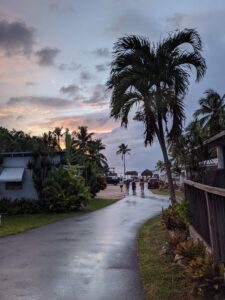
The initial plan is to start diving on Tuesday, but a small tropical storm rolls through on Monday and continues into Tuesday, making the waters too rough for diving. The unexpected dry day is a good chance to prep my camera gear and get to know the group a little better. The veterans seem to be clicking with each other quickly, and I find myself being drawn into their conversations. There’s an unspoken sense of comradery between them that’s noticeable as they talk about their backgrounds, struggles, successes, and goals. They’re all incredibly eager to get in the water, and I can’t help but feel energized myself from the enthusiasm in the air.
On Wednesday, we’re able to go diving! The early risers, Char and Ashley, get up first and start the coffee. By 6:45, the apartment is bustling as everyone eats breakfast, makes lunch, and grabs essential items for the day. We load up the cars and shuttle down to the marina, where we meet our entirely female boat crew: Captain Dani, and mates Chelsea and Megan. The charter boat makes for a very relaxed run out to the dive sites. It’s spacious, comfortable, and moves with ease through the water (that’s all thanks to Captain Dani). It even has a head (boat toilet)! I try to remind myself that this will not be the norm for the rest of my internship. I’m used to schlepping tanks around, loading equipment onto the boat, and helping with mooring and docking, but because we’re on a charter boat, the captain and crew handle everything. I try to make good use of the extra time by experimenting with the camera and writing notes for my blog.

Captain Dani, left, and mate Megan.
Once we reach our first dive site, another boat appears with two more women aboard. Shelby Moneysmith and Vanessa McDonough are the SE Regional Dive Officer and Fishery and Wildlife Biologist, respectively, at Biscayne NP. They’re going to be meeting us at each dive site to assist with debris removal. Once they moor their boat to ours, Shelby and Vanessa don their snorkels, jump in the water, and swim over to our boat. They’re ecstatic to be participating in the project and give us a brief on the dive sites we’ll be visiting for the day.
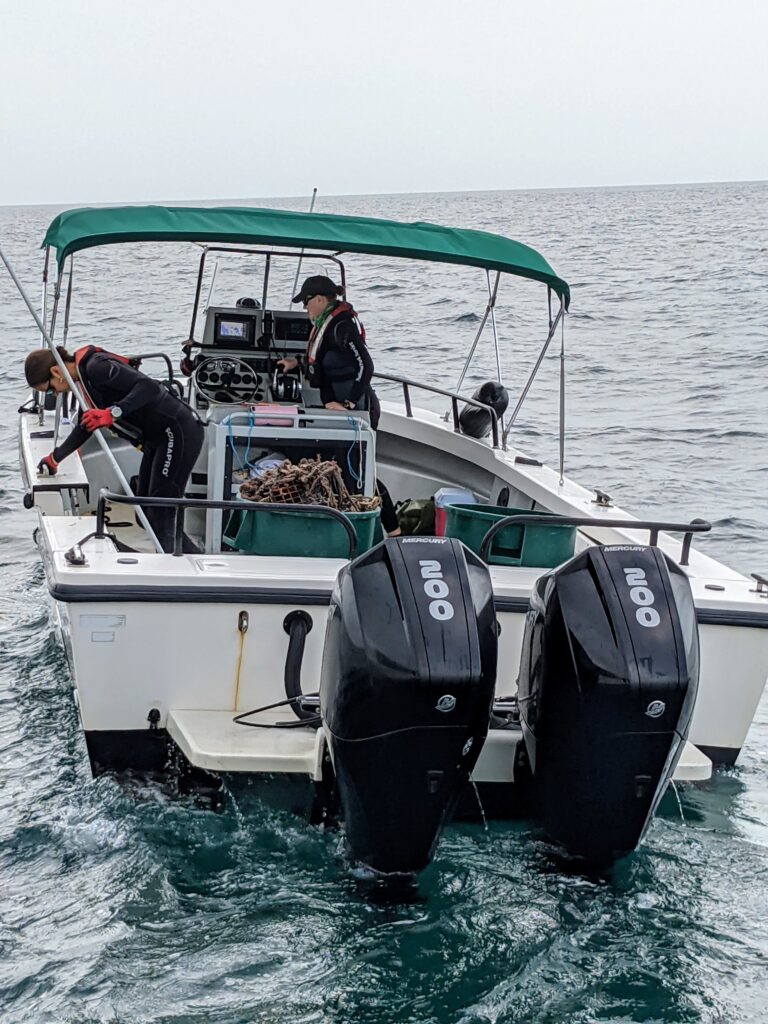
Vanessa and Shelby met us every day to help with debris removal.
The team gets off to a fantastic start collecting debris. We’re on the lookout for monofilament lines, cans and bottles, fishing equipment, and whatever other debris we encounter during the dives. As we come across debris, each diver has a mesh bag that they can store it in for the duration of the dive. Larger objects, like derelict lobster traps, can be sent directly to the surface with lift bags. A lift bag is a piece of diving equipment designed to lift heavy objects from the seafloor. They’re made with airtight fabric and can be clipped to objects and subsequently filled with air from a diver’s second stage, pulling the object to the surface. Once a piece of debris reaches the surface, one of the boat captains drives over and pulls the object from the water. On the smaller side of things, monofilament fishing line is particularly important to find and remove. The small yet strong line can easily slice through soft corals and wrap around other marine creatures, like turtles and fish.
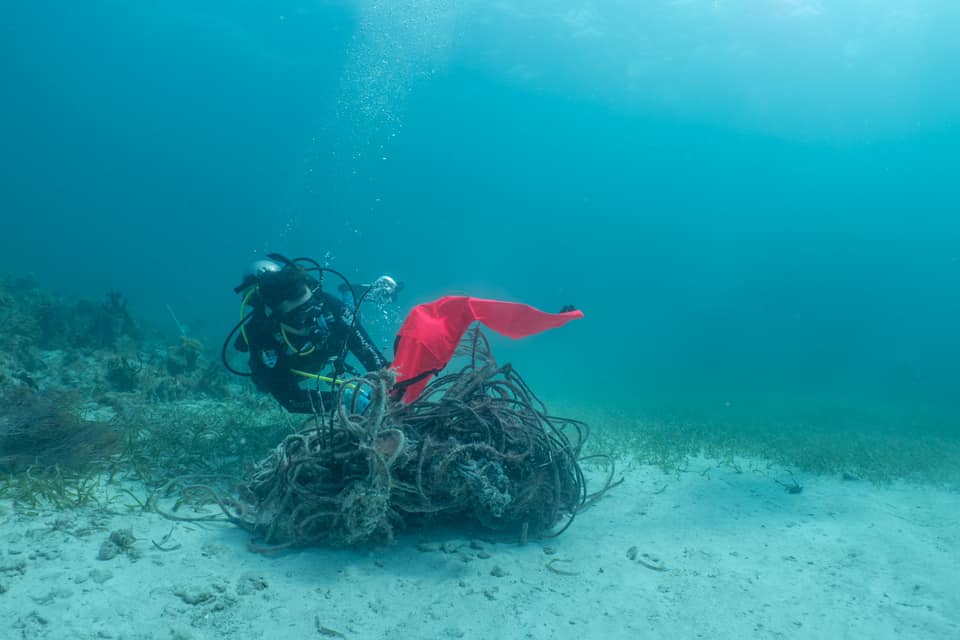
Jess Keller inflates a lift bag to pull a large pile of rope to the ocean surface.
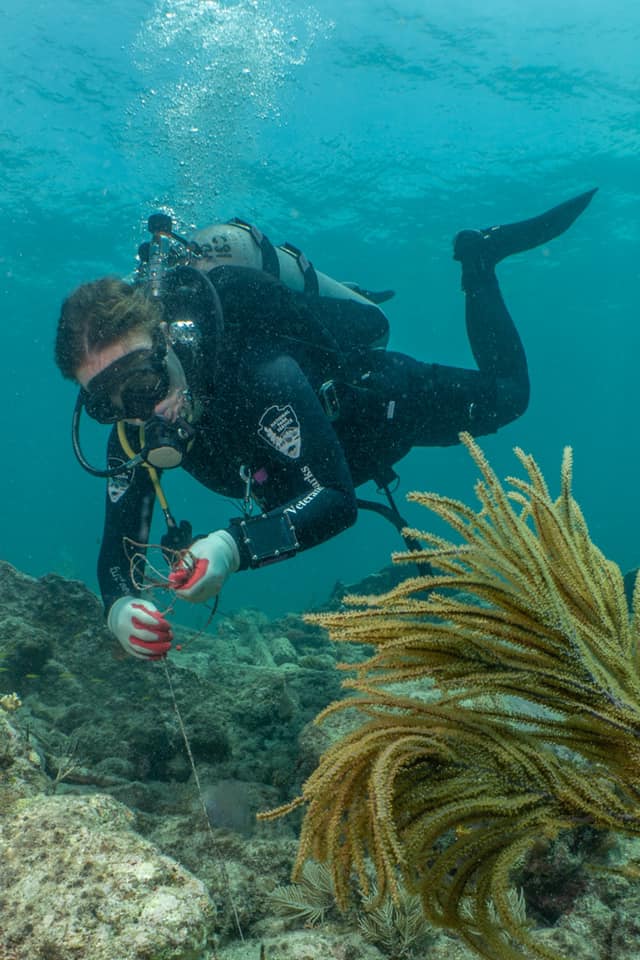
Project leader, Annie Wright, pulls a monofilament fishing line up from the reef.
While the rest of the group is collecting debris, Susanna and I follow with our cameras. I desperately want to start snapping miraculous photos off the bat, but I quickly realize that this craft is going to take a LOT of practice. Thankfully, Susanna is patient with me and takes the time to give me suggestions underwater and answer my questions topside. At first, I feel flustered and clunky with the camera rig underwater. I’m not sure what to do with the strobe lights, how to manually adjust the camera settings correctly, or what to focus on in the first place. It’s overwhelming, but I quickly come to enjoy the challenges this new practice presents. Until recently, I had never been a fan of bringing a camera with me underwater. It always seemed impossible for me to adequately capture the colors, the activity, and the vastness of the underwater world. But, one of the biggest challenges of working in marine science is trying to effectively communicate issues and convey ecological change, and visual communication is an essential part of doing just that. So, I’m determined to do my best and figure it out.
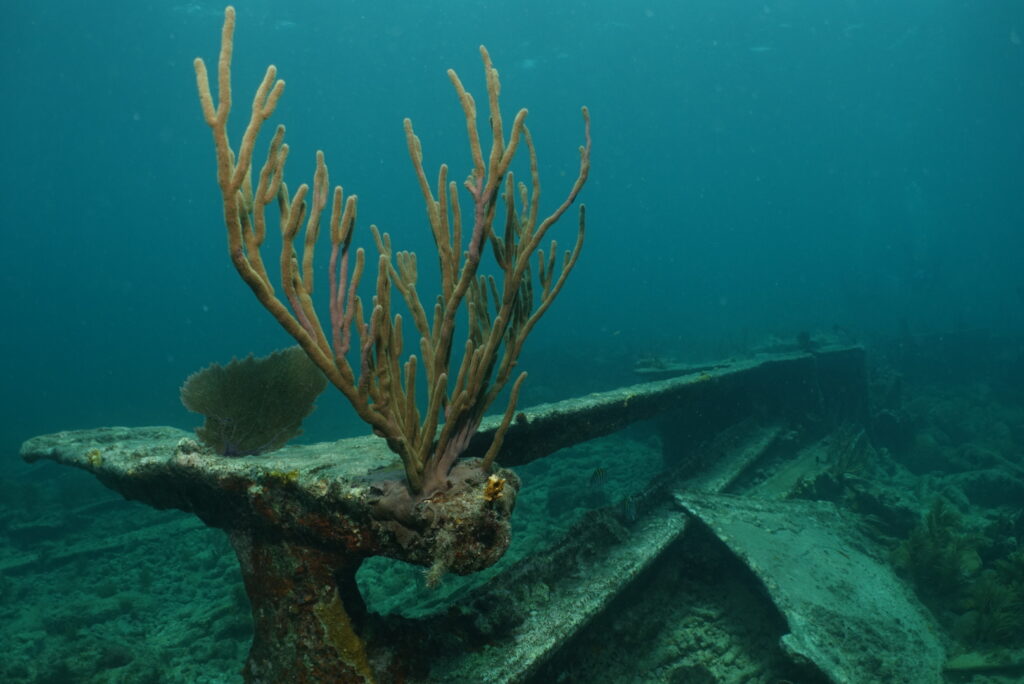
It took me a few days to understand how to use camera strobes effectively. This was the first photo that was lit the way I envisioned!
Midway through the first day of diving, another boat appears on the horizon and moors up behind us. Pedro Ramos, the Superintendent for Everglade, Biscayne, and Dry Tortugas National Park, has been escorted out on the water by SRC Chief Dave Conlin and David Morgan, another SRC archaeologist. Like Vanessa and Shelby, Pedro dons a snorkel and swims aboard for a few minutes. He’s excited to meet the veterans and expresses his support and encouragement for the vets and the project.
As I talk to the vets more and listen to them converse with Pedro, I come to understand that having a mission is especially motivating to them. It makes sense, considering that they come from careers where everything is mission-oriented and objective-driven. To go out each day with the intention of locating and removing as much marine debris as possible gives all of us a sense of purpose, and an even more enjoyable sense of accomplishment when the day is over and there are trash cans full of debris on the boat.
The week progresses smoothly. I’ve abandoned any hope of retrieving my laptop from the Denver airport, but towards the end of the project, I’m not even thinking about it much since we’re having so much fun. I’m much busier both underwater and above water now that I’m working on photography. During each dive I scout around, looking for the veterans and snapping pictures of them pulling monofilament line off of corals and stuffing old glass bottles into their bags. Once we’re back home, I have to rinse the camera housing in freshwater, pull out the batteries to charge them (admittedly I forget this step a couple of times), and upload and organize the day’s photos on the computer. It requires quite an attention to detail, but I’m starting to find a rhythm.
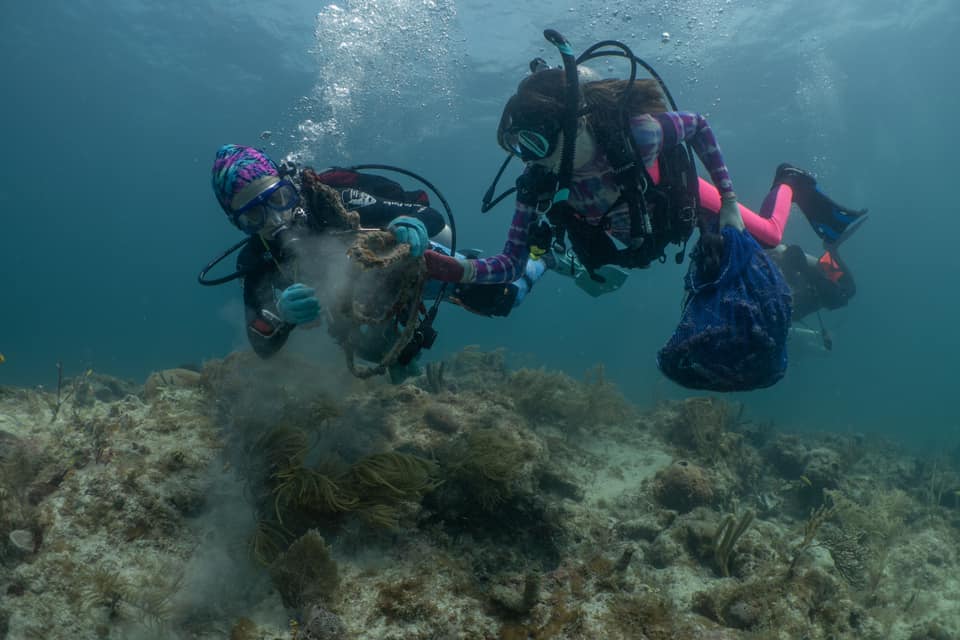
Linsay and Abbie collect debris, stirring up some of the sediment on the seafloor
—–
It’s Friday afternoon, and the boat cruises back to the marina. I pull my phone out and am surprised to see that I have service (coverage is spotty on the water). Emails are coming through, and one catches my eye. It’s from the Denver airport lost and found. I’m not expecting any miraculous recovery updates, since it’s been nearly a week since I left the laptop in the terminal. But, to my disbelief and overwhelming joy, the email reads, “Lost article located…”. LOCATED! Absolutely giddy with relief and excitement, I run to the bow of the boat, where everyone is relaxing after the long day of diving. “They found my laptop!” I exclaim. Susanna jumps up, as excited as I am. “No way!” The rest of the team yells a collective “hooray!” as I dance around. Could this week get any better?!
—–
By the end of the week, it’s as if all of the women on the team have known each other for ages. We’ve laughed, cried, learned, and grown together. We’ve made an impact in Biscayne, and I think the project as a whole has made an impact on everyone involved. Overall, we collected 587 pounds of marine debris, from tiny lead weights to cumbersome derelict lobster traps. Just the monofilament line alone is enough to stretch across three football fields. On the photography side of things, I snapped nearly 500 photos during the project! I’m extremely happy to have made strides with my photography skills. It’s a lot harder than I anticipated, but the process of understanding the lights, camera, and my subjects in order to capture what I envision is totally addicting.
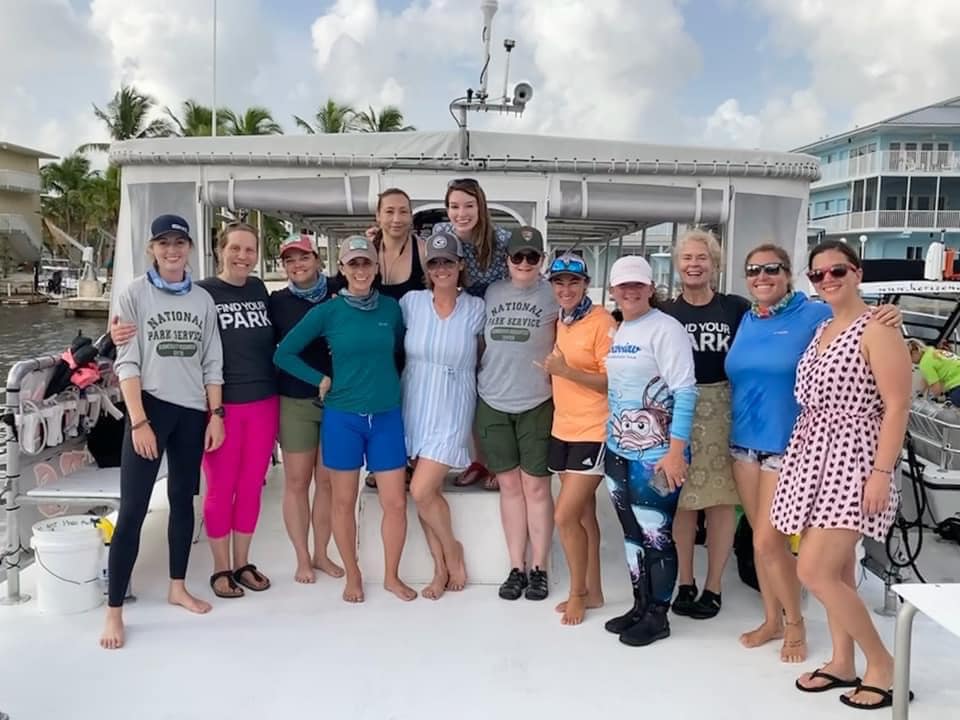
Our friends from the National Park Foundation joined us for a few days on the boat
There are so many people and organizations who made this week happen. The project wouldn’t have been possible in the first place without funding from the National Park Foundation and support from the SRC who created and manage the NPS WVIP program. Additional support came from the Women Divers Hall of Fame, an organization that recognizes women leaders and innovators in the diving community. To everyone involved, thank you. I truly hope it is the first of many all-female WVIP projects. I’d also like to thank Susanna Pershern for her patience, guidance, and encouragement as I work to improve as an underwater photographer. And of course, thank you to OWUSS and the SRC for making it possible for me to participate.
Next week, I’m staying in Biscayne National Park and working with the natural resources team on various projects. Check back in a bit for another week of adventures!
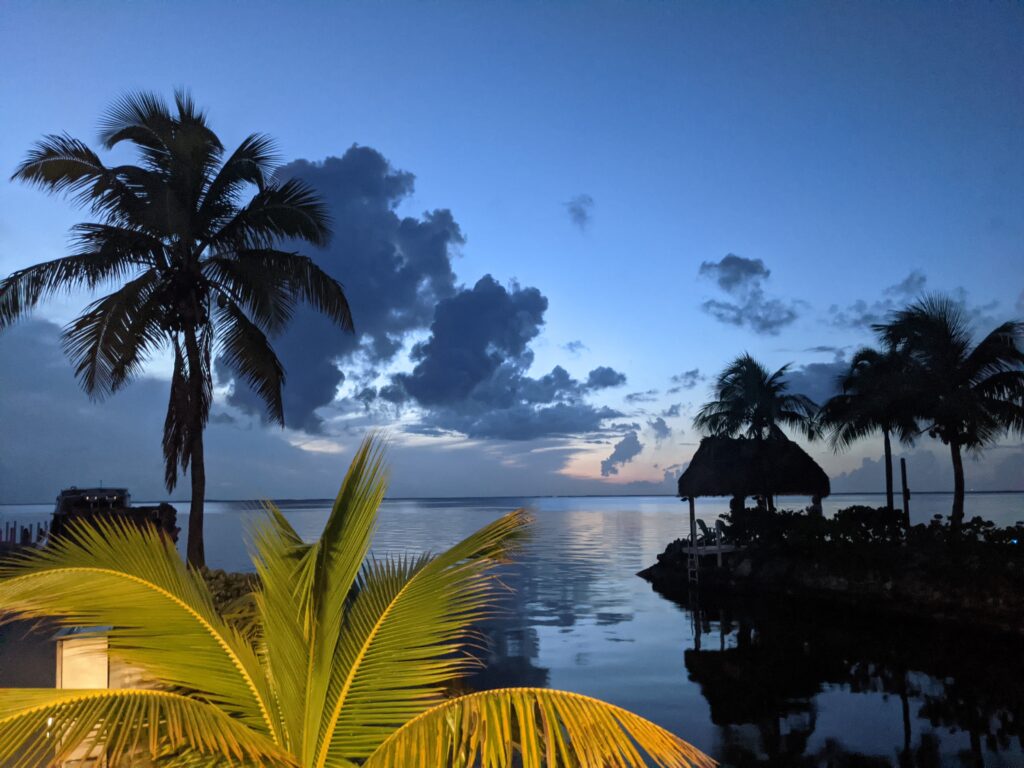


Fantastic!